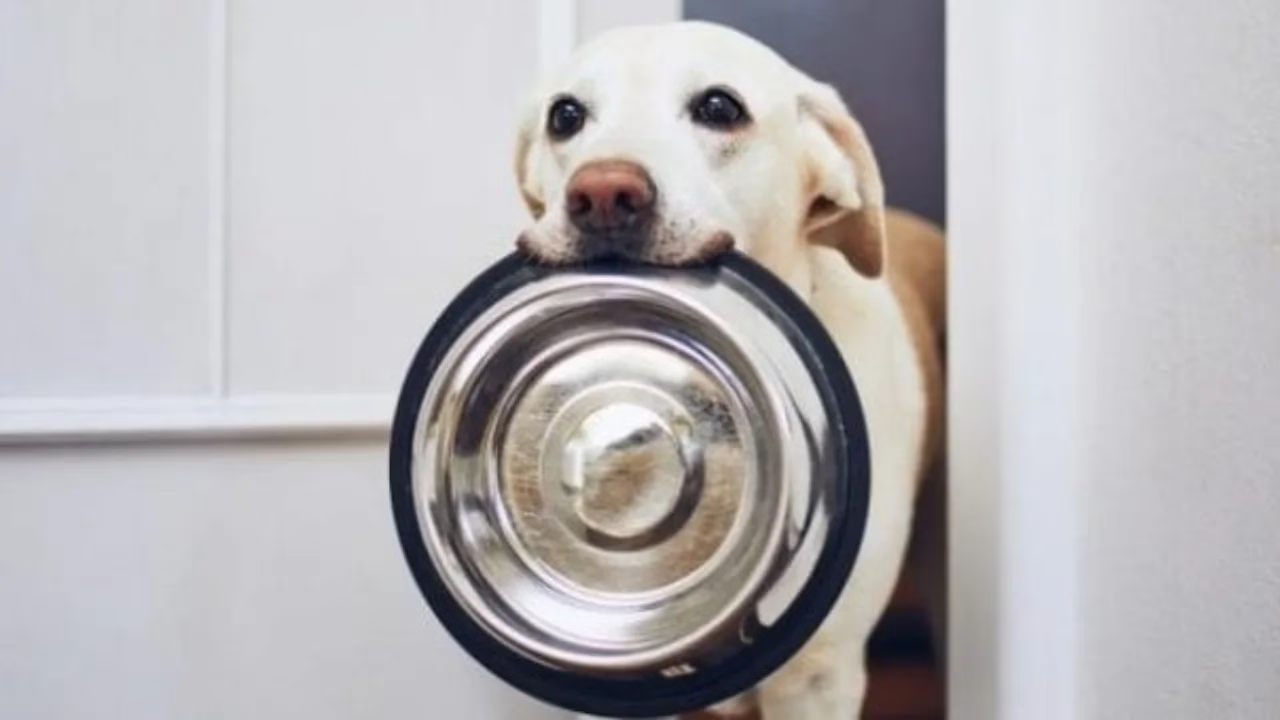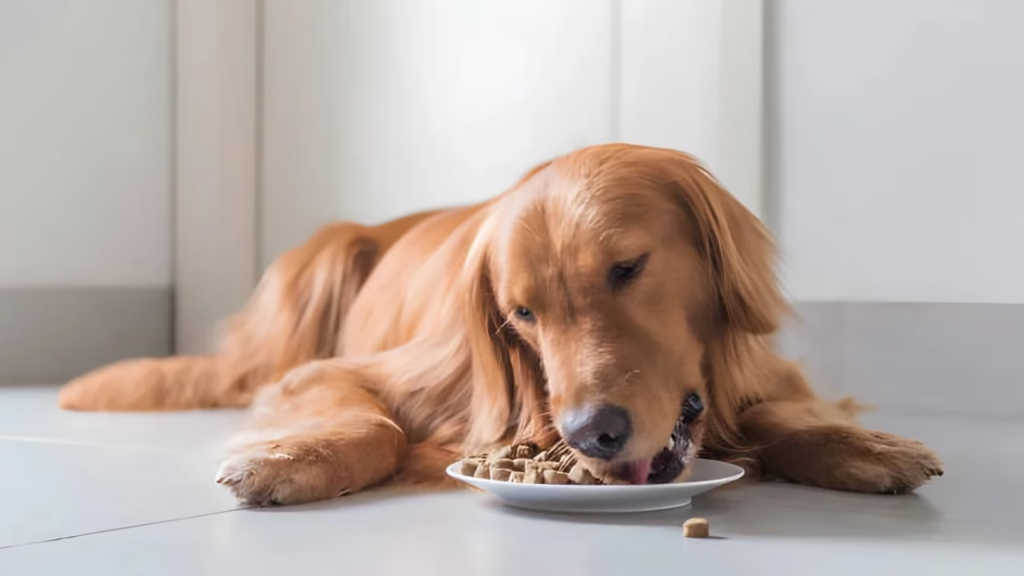Labrador Retrievers, or Labs, are one of the most popular dog breeds, loved for their playful energy, loyalty, and friendly demeanor. As a pet lover, you want the best for your furry companion, and that starts with nutrition. In 2025, finding the best dog food for Labrador means focusing on options that support their active lifestyle while addressing common issues like obesity and joint health. This Labrador food guide will walk you through everything from nutritional basics to top brands, helping you craft a perfect Labrador diet. Whether you’re welcoming a new puppy or caring for a senior Lab, let’s explore how to keep your dog healthy and happy.
Nutritional Needs of Labrador Retrievers
Labradors are energetic, medium-to-large dogs that thrive on a balanced diet tailored to their needs. A solid Labrador diet emphasizes high-quality protein, making up 25-30% of their food, to build and maintain strong muscles. Sources like chicken, fish, or lamb are ideal, as they provide essential amino acids for growth and repair.
Healthy fats should account for 12-18% of the diet, supporting skin health, a glossy coat, and energy levels. Omega-3 fatty acids from fish oil are crucial, especially since Labs are prone to allergies and heart conditions. For joint support—vital for this breed’s risk of hip dysplasia—look for added glucosamine and chondroitin.
Carbohydrates from whole grains, vegetables, or sweet potatoes offer fiber for digestion and help prevent weight gain, a big concern for Labs who love to eat. Aim for a calcium-to-phosphorus ratio of about 1:1 to support bone health, particularly in puppies. Vitamins and minerals from fruits like blueberries boost immunity, while antioxidants protect against eye issues.
Puppies require higher calories (around 1,000-1,500 daily) for development, adults need 1,000-1,300 to stay lean, and seniors benefit from lower-calorie formulas with extra joint aids. Choose AAFCO-approved foods without fillers to ensure complete nutrition. By prioritizing these elements in your Labrador food guide, you’ll help your dog avoid obesity and enjoy a vibrant life.
Top Dog Food Brands for Labradors in 2025
Selecting the best dog food for Labrador involves considering their love for food and tendency toward weight gain. In 2025, top brands focus on high-protein, low-filler recipes with joint support. Here’s a curated list with pros and cons, based on expert recommendations and pet owner reviews.
- Purina Pro Plan Savour Adult Shredded Blend
This dry food features real chicken as the first ingredient, blended with rice and probiotics for digestion. It’s high in protein (26%) and includes glucosamine for joints.
Pros: Affordable, appealing texture for picky eaters, supports weight management with controlled calories, and promotes healthy skin with omegas.
Cons: Contains grains, which may not suit grain-sensitive Labs; some report mild gas during transition. - Royal Canin Breed Health Nutrition Labrador Retriever Adult
Tailored for Labs over 15 months, it uses chicken by-product meal, brown rice, and EPA/DHA for heart health. The kibble shape encourages slower eating to prevent bloat.
Pros: Breed-specific formula aids weight control and joint mobility; includes taurine for cardiac support and is vet-recommended.
Cons: Higher cost; ingredients like by-products may deter those seeking “all-natural” options. - The Farmer’s Dog Fresh Food Delivery
Custom fresh meals with human-grade ingredients like turkey, beef, and veggies, delivered pre-portioned. No preservatives, just balanced nutrition for Labs.
Pros: Personalized to your Lab’s age and activity; helps with weight loss through portion control and supports digestion with probiotics. Easy for busy pet lovers.
Cons: Subscription-based and pricier ($2-8/day); requires freezer space and may not be ideal for travel. - Hill’s Science Diet Adult Large Breed
Made with chicken meal, barley, and natural fibers, it offers glucosamine for joints and antioxidants for immunity. Calorie-controlled to combat Lab obesity.
Pros: Vet-formulated, promotes healthy weight and mobility; includes veggies for added nutrients and is widely available.
Cons: Not grain-free; some Labs find the flavor bland, requiring toppers. - Wellness Core Grain-Free Original
High-protein (34%) from deboned turkey and chicken, with peas and potatoes for carbs. Packed with probiotics, antioxidants, and joint supplements.
Pros: Grain-free for allergy-prone Labs; supports lean muscle and energy without fillers; great for active adults.
Cons: More expensive; higher protein may cause loose stools in less active dogs if not transitioned slowly. - Taste of the Wild Pacific Stream
Salmon-based, grain-free formula with sweet potatoes and fruits. Rich in omega fatty acids for coat health and probiotics for gut balance.
Pros: Fish protein suits Labs with poultry allergies; affordable premium option with antioxidants for overall wellness.
Cons: Strong fish smell; some owners note it leads to thirstier dogs due to higher salt content.
These brands excel in providing a nutritious Labrador diet, blending science-backed ingredients for long-term health.
Feeding Guide for Labradors (Age-Wise)
A structured feeding routine is essential in any Labrador food guide to prevent overeating and maintain ideal weight. Always measure portions, adjust for activity, and consult your vet. Labs typically weigh 55-80 pounds as adults, so portions vary.
- Puppies (8-12 Weeks): Feed 3-4 small meals daily to fuel growth. Total: 1-2 cups of puppy formula, divided evenly. High-calorie foods with DHA support brain development.
- Puppies (3-6 Months): Continue 3-4 meals, increasing to 2-3 cups daily. Focus on protein for muscle growth and add joint supplements if recommended.
- Adolescents (6-12 Months): Switch to 3 meals, about 2.5-3.5 cups total. Monitor for rapid growth—Labs can gain weight quickly here.
- Adults (1-7 Years): Two meals a day, 2-4 cups depending on size and exercise. Active Labs may need more; aim for lean body condition to avoid obesity.
- Seniors (8+ Years): Two meals, 2-3 cups of senior food with reduced calories. Include joint support and softer textures if needed for aging teeth.
Never free-feed, as Labs will overeat. Provide fresh water always, and transition foods over 7-10 days to avoid digestive upset.
FAQs About Labrador Diet
Pet lovers often have questions about the best dog food for Labrador. Here are answers to common ones.
- How much should I feed my adult Labrador?
Typically 2-4 cups daily, split into two meals, based on weight and activity. Check labels and monitor body condition to prevent weight gain. - What if my Lab has allergies?
Common triggers include grains or chicken. Choose limited-ingredient or grain-free options like salmon-based foods, and get vet allergy testing. - Is raw food good for Labradors?
Yes, if balanced and handled safely, raw diets can provide natural proteins. But consult a vet to mitigate bacterial risks and ensure nutritional completeness. - Can Labs eat human food as treats?
In moderation—plain veggies, fruits, or lean meats make up 10% of their diet. Avoid toxic items like chocolate, onions, or grapes. - How do I help my overweight Lab lose weight?
Switch to a low-calorie formula, increase exercise, and measure portions strictly. Vet-approved plans like Hill’s Metabolic can help.
Conclusion:
Navigating the best dog food for Labrador in 2025 is about balance and prevention. Prioritize protein-rich, joint-supporting foods to match their energetic nature and curb health risks. Whether opting for kibble like Purina Pro Plan or fresh like The Farmer’s Dog, your Lab’s diet can enhance their quality of life.
Actionable tips: Weigh your Lab monthly and adjust portions; incorporate daily walks or play to burn calories; add pumpkin or fish oil toppers for digestion and coat health; schedule vet visits for diet reviews; and choose treats wisely to keep calories in check. With this Labrador food guide, you’re set to nurture a happy, healthy companion. Start by trying a top brand sample—your Lab will wag their tail in approval!


